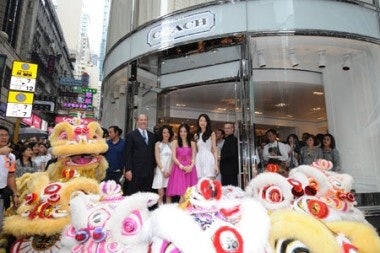Report Indicates Wealthy, Urban, Educated Chinese Women Tuning In To Local Consumption-Based Programming#

One of the gradual shifts we've been watching as the Chinese luxury industry matures is that of advertisers more overtly targeting female consumers. While this might sound like an obvious choice, since most reports about the Chinese luxury market tend to paint Chinese female consumers as luxury-mad shopaholics, in actuality -- as many studies and books have shown -- middle-aged men are, and will likely remain for years to come, the primary buyers of luxury goods in China.
However, as most of these purchases are given as gifts, either to business partners or wives or girlfriends, brand marketers are starting to wake up to the fact that women, rather than men, will likely dictate luxury trends in China going forward. This is only rational. If middle-aged men were buying luxury goods (aside from cars) for themselves, marketers would overtly target these men. We already see this from brands like Dunhill, who know their demographic inside and out and promote a sophisticated, mature lifestyle that appeals to this age group in China.
So, reports by HSBC and others have confirmed that while men are the luxury buyers of today in China, women are the luxury buyers of tomorrow. With women becoming increasingly fiscally independent year by year in China, this only makes sense. But while researchers are virtually unanimous in crowning the female luxury buyer the future queen of luxury consumption, ideas about how to best reach these shoppers is as fragmented as China is populous. While some companies think the future is digital outreach -- and they've already shifted their efforts online -- others stick with traditional print advertising.
If a new report by CSM is any indication, however, as luxury brands try to target key female demographics (e.g., moderately wealthy, educated, urban), we might see more television-based initiatives. From MediaAsia:
Over 80 per cent of leisure and fashion programming is broadcast on local TV channels in China. Data over three years from 2007 to 2009 clearly demonstrates this trend.
Over the same period, less and less of this programme type has been broadcast on national level channels.
A closer look at this situation shows an important finding. The market share of channels with either the word ‘life’ or ‘fashion’ in the markets examined is relatively high.
Many of these channels rank in the top ten or even top five channels in their respective markets. This indicates channels with such a programme focus have a strong competitive position.
An investigation of audiences for this programme type indicates that consumption-oriented groups in society are devoted to leisure and fashion programmes.
...
It is clear to see that audiences of these programmes and channels are a highly desirable audience, filled with individuals with consumption needs and consumption capacity.
What these findings could mean for luxury brands is that lifestyle television initiatives -- corporate tie-ins or product placement, along with traditional television advertising -- could be an effective supplement to ongoing digital or print outreach.